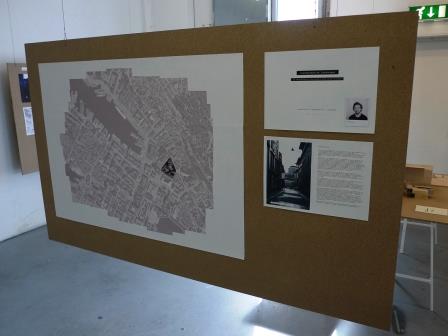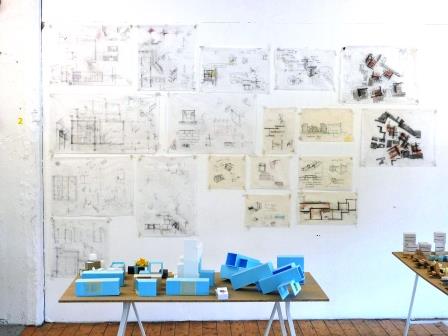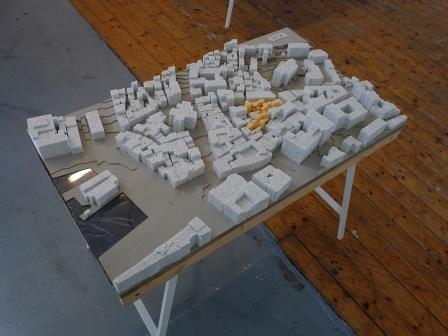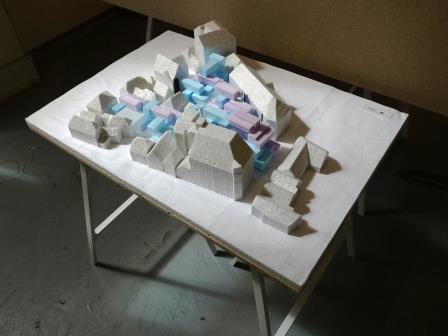Diploma 2014: "Transformative landscapes" by Kim Kendel
- an intervention in the historic city centre of BergenThe historic area ‘Vågsbunnen’ in the inner city of Bergen has increasingly gained attention from developers as well as cultural
The historic area ‘Vågsbunnen’ in the inner city of Bergen has increasingly gained attention from developers as well as cultural institutions and local governments. Local initiatives seen through various new establishments that attract certain segments of the population has been seen as a potential for a coherent regeneration of the area where its historic value fuses with economic growth.
This project is an intervention within a fragmented and somehow neglected city block in this area. Despite the recent relocation of businesses and permanent residents the research has revealed the presence of new establishments and other associations that can be regarded as initiatives created at the level of individuals or small groups. The project aims at empowering and accommodation for such activities because they represent valuable groups in the city often neglected among decision-makers or inevitably becoming economical tools. The structure projected will act as a complement to its surroundings as well as to provide public access to the inherent qualities of the site. This implies some sort of sensitivity and synergetic attitude towards the buildings and programs surrounding the project.
Given the size of the area as well as the future needs of housing and workspaces in Bergen the project implements this through a flexible mixed-use strategy as a translation of the qualities of the contextual. The traditional mix of working and living in urban areas is continued throughout the new structure. The strategy is to have structure that has the ability adapt to the users needs.
The increased temporality of the city can be seen as a challenge but also as its very strength. On one hand the increased turnover of property in Norwegian cities combined with the attractiveness of living in an urban environment has created a divided city where those of high economical capital has relocated those with less. On the other hand the increase of people moving into the city clearly makes new and interesting meetings possible. The aim has been to find new ways of turning these possibilities into collaborations that can become economically as well as socially sustainable.
The city increasingly attracts people looking for opportunities and some sort of self-realization. Many of the establishments in the area suggest a segment of the workforce that are self-employed and more driven by desire than of pragmatics. A considerable portion of the workforce are self-employed. Coming in new shapes and forms, they are still a significant actor in the urban landscape. The project addresses this segment of the workforce by providing co-working spaces that in a broader perspective, as an agglomeration, also can have the potential of becoming a generator both for the area as well as the city overall. Such agglomeration can offer this group a more sustainable work-life considering the lack of security offered by an employer. The facilities can potentially be open to people of all professions and become a meeting-place that promotes new collaborations.
Agglomeration combined with diversity will hopefully increase the robustness of the actors as a group that is needed to adapt to changing circumstances.
All photos: Kim Kendel

“Introduction with situation plan showing the location of the site in Bergen city centre.”

“Background and research.”

“What to do and how to do it.

“Excerpts of drawings and models generated during the diploma process”

"Situation model (1:500) showing the project within the urban landscape.”

“Model (1:200) showing the distribution of single and merged units. Scenario of full development.”

“Overview of exhibition"
